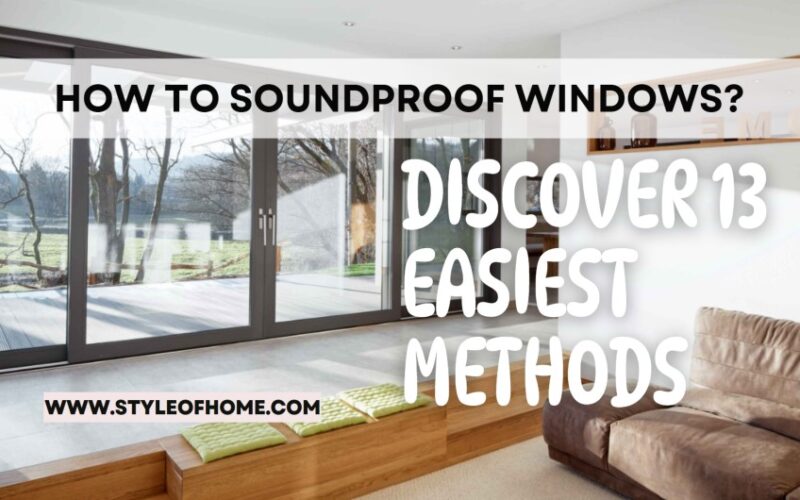Do you want to make your home a more peaceful and quiet place? One way to do this is to soundproof your windows. Soundproofing means stopping noise from coming in or going out through your windows. If you want to get rid of them by soundproofing the windows but don’t know how to do that. We’re here for you with some easy and useful methods on how to soundproof windows.
11 Ways To Soundproof Windows
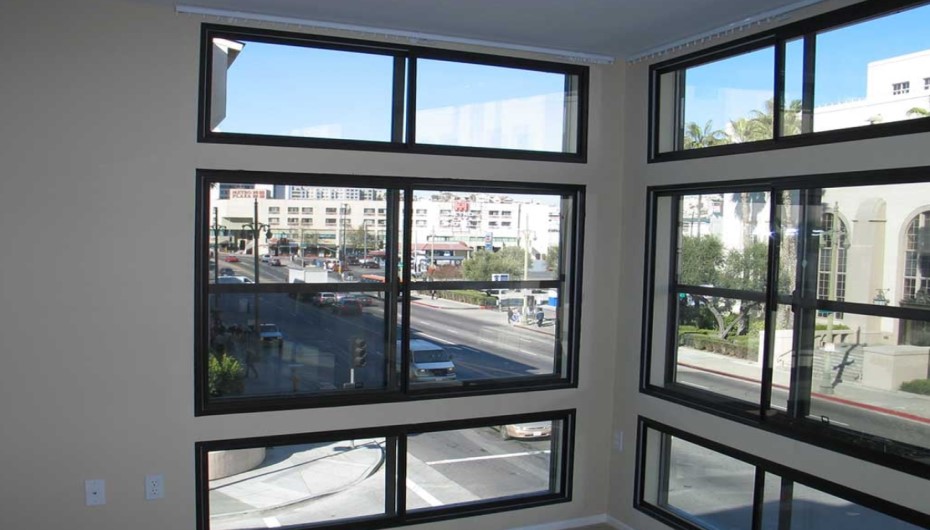
Soundproofing means blocking or absorbing sounds so they can’t travel through the air or solid objects. When we soundproof a window, we’re creating a barrier that stops sounds from passing through it. This helps keep noises outside from coming in, and noises inside from going out. From modern to traditional, every style of home can benefit from soundproof windows.
There are many budget-friendly and easy to applicable ways to prevent sound from entering through windows. When soundproofing, remember that some solutions can block airflow. So, make sure you can still open windows or vents for ventilation. Let’s explore all of them and make your home soundproof.
1. Understand Your Windows
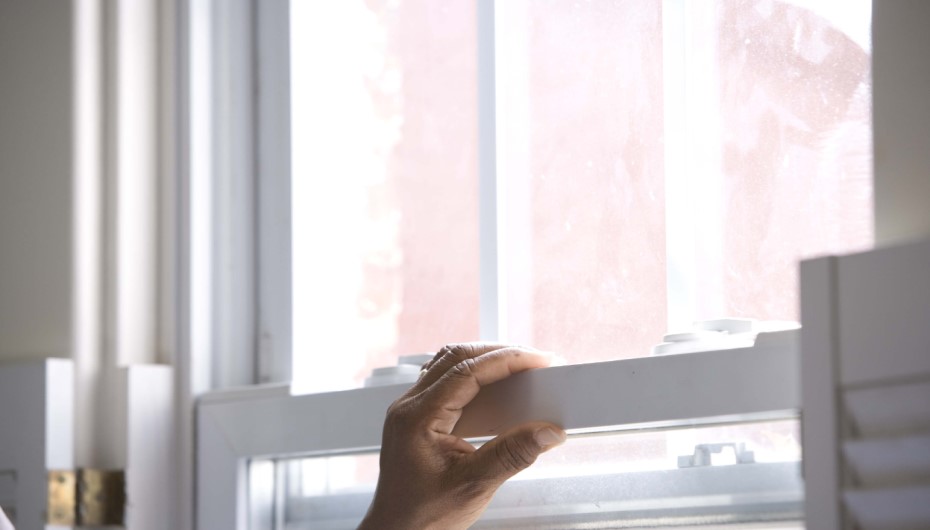
If you want the best solution to reduce noise, it is very important to know what kind of windows and window sizes you have, including their size, material, and shape.
Simply start by measuring a window carefully. Then, consider what you need, a temporary fix or a long-term solution. Do you have single-pane or double-glazed windows? Answering these questions will help you choose the best soundproofing solution for your needs and budget.
2. Acoustic Sealants or Caulking
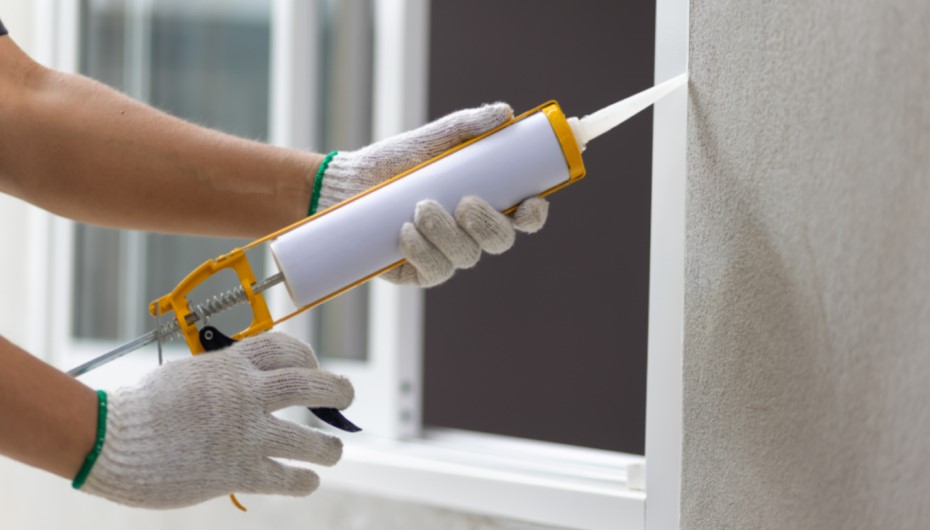
You should know that sound gets in through small gaps around windows. The best way is to check the borders where windows and walls meet for gaps. Unsealed windows let sound in even with noise-reducing treatments. Using special acoustic sealant is an effective way for people who are looking for how to soundproof windows on a budget. Acoustic sealant stays flexible and lasts longer.
To use acoustic caulk, start by cleaning the window frame. Next, apply the caulk at an angle. Make sure to fill in any gaps where air can get through. Smooth out the caulk and let it dry. This will block sound by filling in the holes between the window and the wall.
3. Glass Cover or Interior Acrylic Sheet
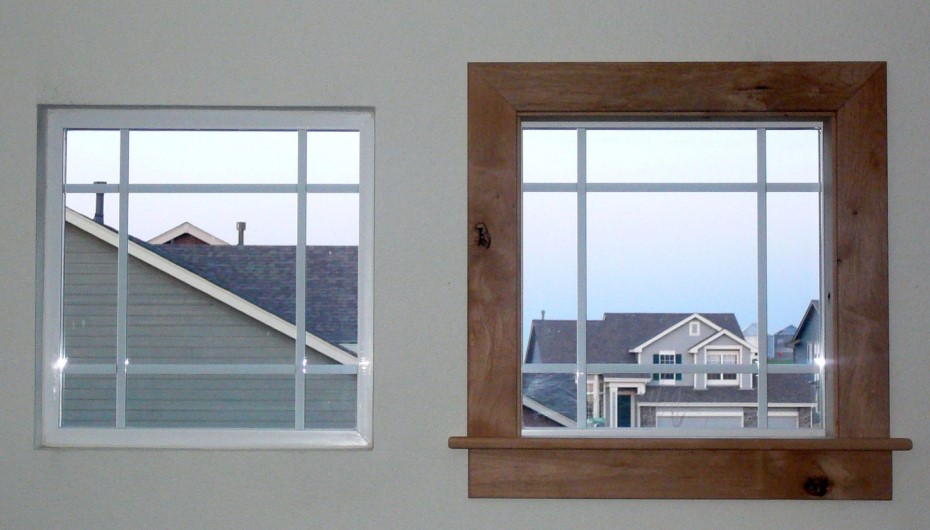
The glass covers or interior acrylic sheets are another effective method to soundproof windows. You can add a second layer of glazing to your windows. Simply attach a frame and a sheet of acrylic or glass to the inside of your window using magnets.
Remember this method is only useful for minor noise issues. It’s not recommended to use this method to make a huge difference with loud sounds.
It might also change the look of your windows. You can also consider retrofitting a double-glazing system.
4. Storm Windows
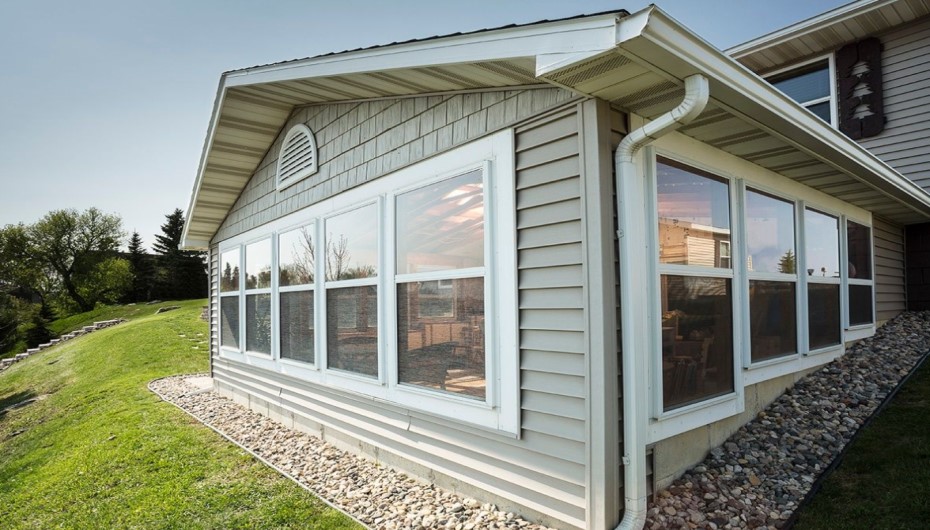
Storm windows are installed outside of your home. Apart from harsh weather, these windows are very useful for preventing sound from coming through my windows. These windows add an extra layer of glass, which helps block sound and improves insulation.
You can use windows built with high-quality material to get the best results. The effectiveness of storm windows depends on the frame sealing, glass thickness, and air trapped inside.
5. Soundproof Curtains
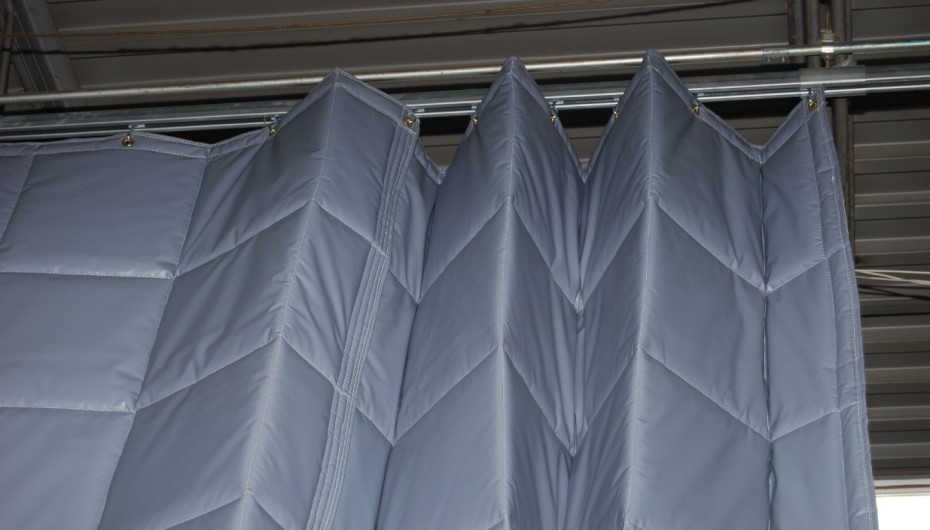
A soundproof curtain is a type of curtain that can absorb sound waves and keep noise out due to its heavy and dense material. They’re a simple, affordable solution. Thick blankets are also available to choose from but are costly compared to others. These special curtains are made to absorb sound and can be hung over your existing curtains or blinds.
Soundproof curtains do not eliminate all sound. They can only reduce noise and echo, and even improve insulation. These curtains come in different colors and styles. You can install them close to the window and cover the entire area to get the best results. They’re a good solution for light noise issues like bird chirps or light traffic.
6. Foam Soundproofing Mats
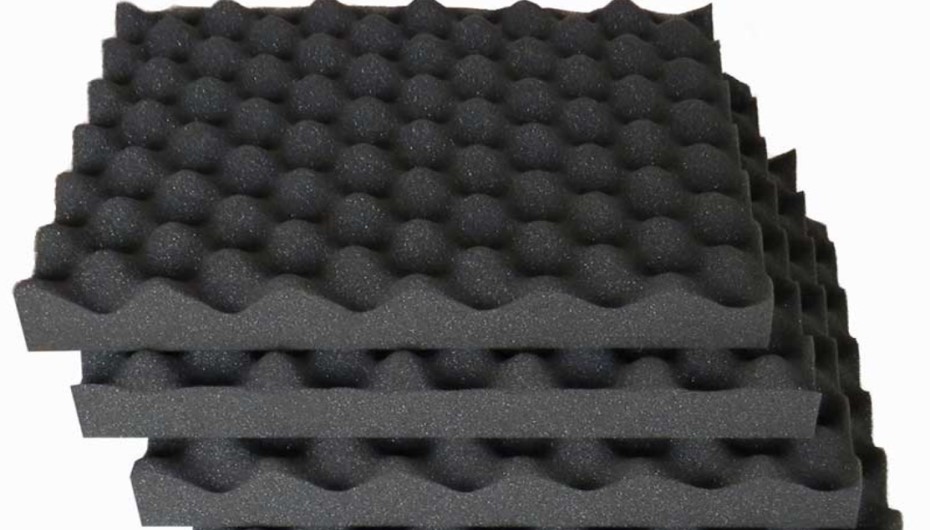
These mats are also called window foams. They’re easy to remove and replace. Window foams are very helpful for making a big difference in sound reduction as well as blocking light.
These mats can affect how your windows look. You’ll have to keep putting them up and taking them down to balance noise and light levels.
7. Self Adhesive Sealing Tape
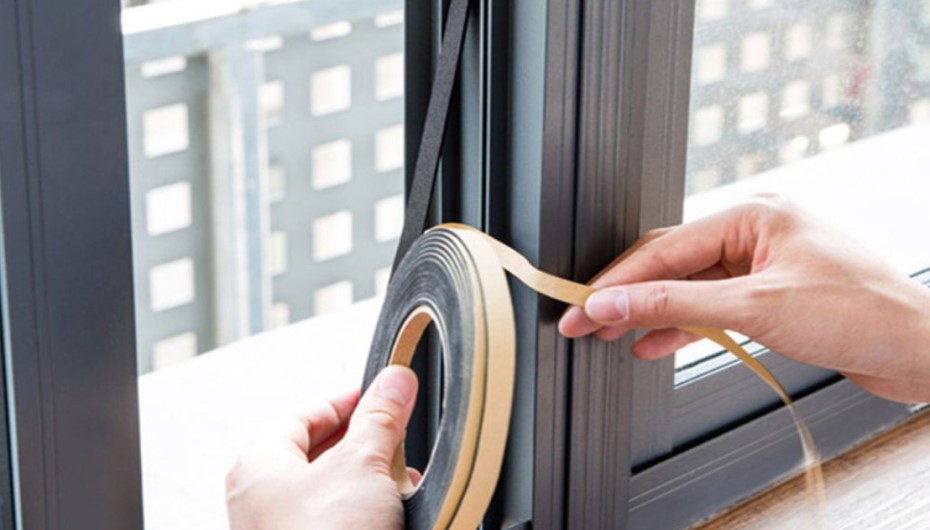
Another easy way regarding how to soundproof windows is to use weatherstripping or self-adhesive foam sealing tape. These tapes are used to block outside noise. It can easily be removed without damaging your windows. It covers gaps around your window frame, like the bottom edge of your window sash.
If you want a temporary solution, this method is best for you to apply. Just be careful when removing the tape after a long time, as it might pull off some paint or wood from your window frame. You can also use high-density foam tape and apply it carefully to avoid damaging your windows.
8. Soundproofing Blinds
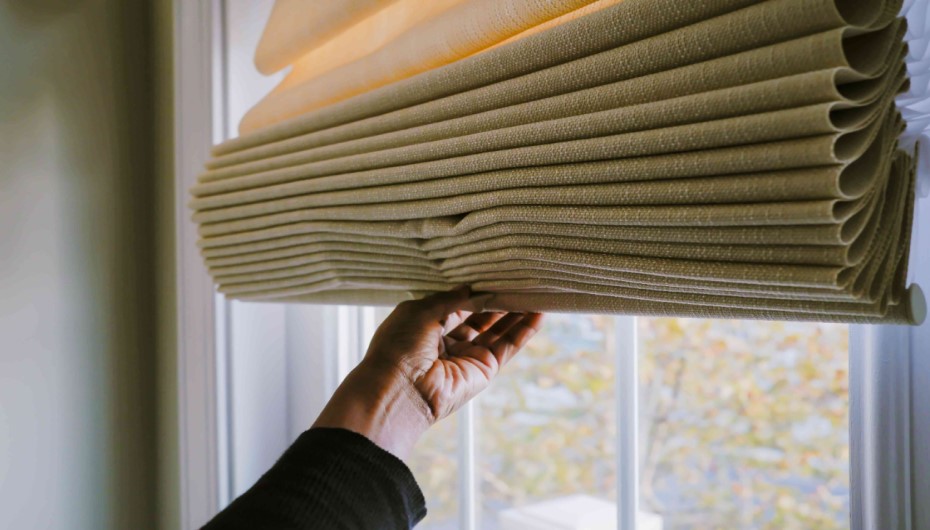
Blinds are often used to block light and give privacy but they can also be used to reduce noise. There are many soundproof shades like timber wooden window shutters, special honeycomb shades, and insulating blinds to choose from.
You can use special honeycomb cell shades to soundproof windows, as they trap air and stop it from entering. Timber wooden shutters work well because wood is good for absorbing sound. Thick insulating blinds are also good to use. These blinds are made of heavy materials that block sound effectively. You can also choose blinds with double cells to get better soundproofing results.
9. Vinyl Barriers
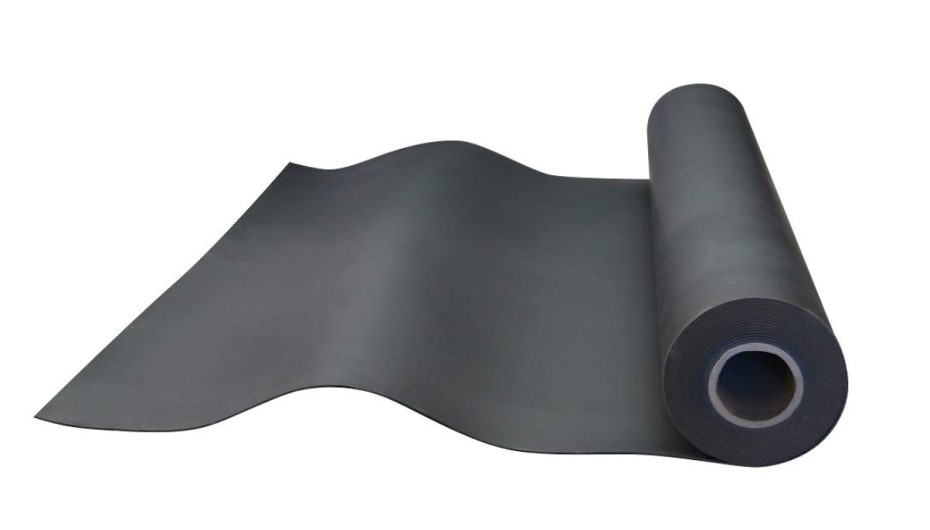
Another one of the best DIY soundproofing solutions is a Mass-loaded vinyl barrier. These sound barriers are used to absorb impact sounds like vibrations from engines or footsteps. Mass-loaded vinyl barriers are made of PVC, vinyl, and heavy materials.
These sound barriers are used for hidden or always-covered windows. You can hang MLV over windows like heavy curtains. You can also install it on ceilings and floors to reduce noise. Another advantage of this method is that you can paint these to whatever paint you like to match your decor.
10. Carbon Absorption Panels
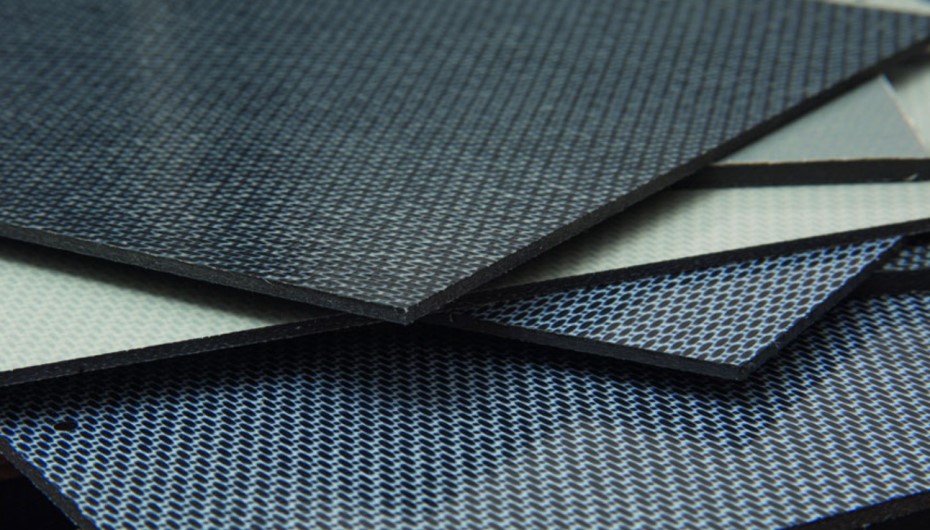
Carbon absorption panels are trendy and useful for the best results in soundproofing your home windows. Carbon panels are placed over windows.
They absorb sound waves by reducing unwanted noise. These panels block low-frequency sounds like machinery noise or thunder. They offer better soundproofing benefits. However, they are more expensive, so they may not be for everyone.
11. Soundproof Window Glazing
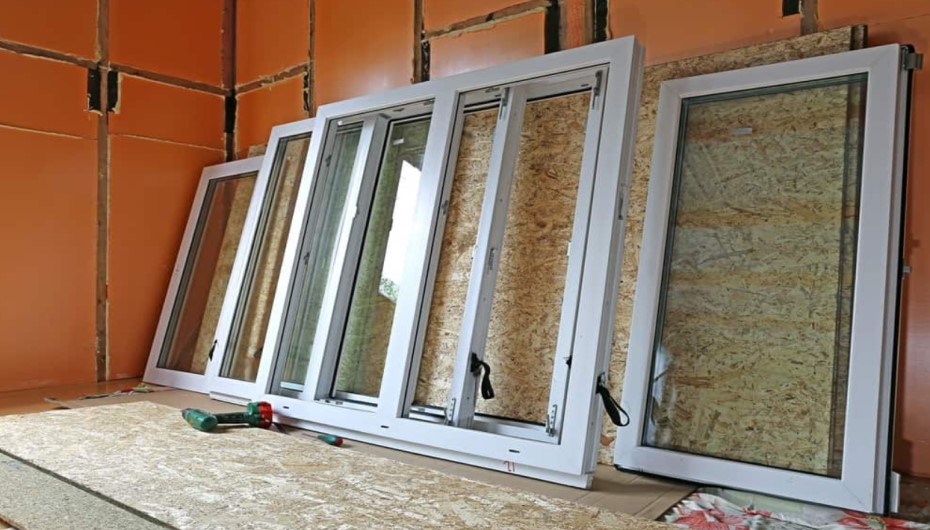
There are many companies manufacturing soundproof glass for your windows to block sound. Although they don’t completely block sound, as some sound will always pass through.
These specialized windows are costly compared to other windows. You can also compare Andersen vs Marvin windows while purchasing a strong and durable soundproof window.
12. Double or Triple Glazed Windows
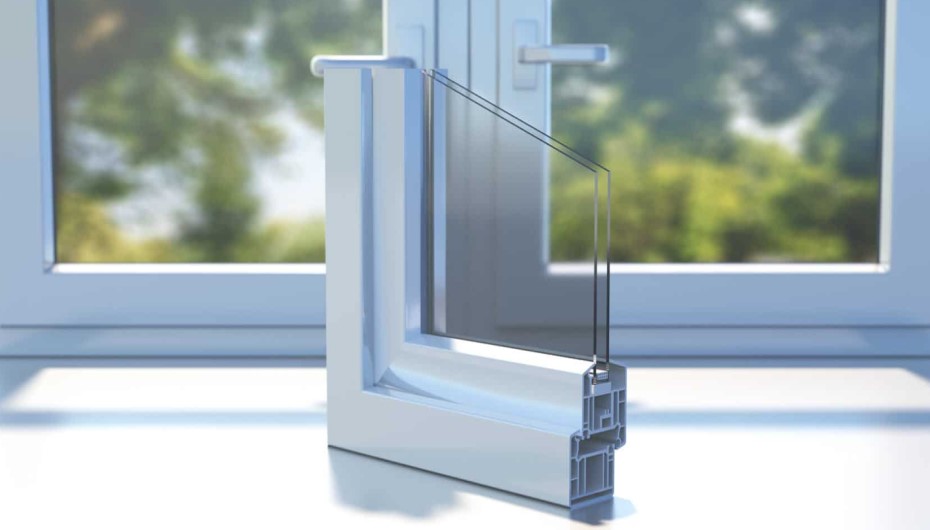
Double or triple-pane windows are used for maximum sound reduction. Most newer homes have double-glazed windows, while many old houses have single-pane windows. If you want more noise reduction and have a single-pane window, simply upgrade your single-pane to a double or triple-glazed.
This is the most effective and energy-efficient soundproofing window method. They also provide a tighter seal. Its only drawback is that if they get damaged you’ll have to replace the window.
13. Window Plugs
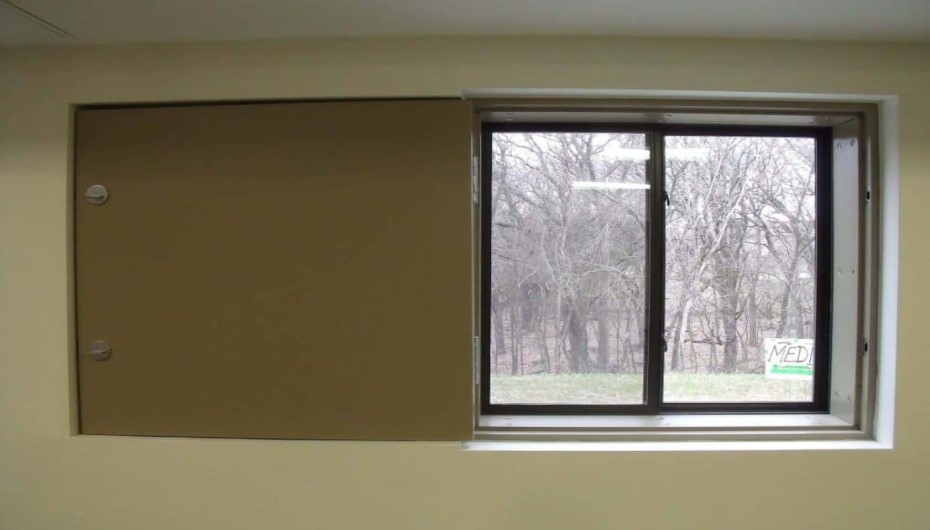
Window plugs can easily be customized to fit your windows. They are designed to block out noise by filling the window frame with layers of soundproof matting, acoustic foam, and wood. They are easy to install and remove. They are also cost-effective and non-permanent.
They might not look great, but they can really help reduce noise. Window plugs work well if they fit tightly in the window frame. If they don’t fit well, they won’t work as well.
Conclusion
In short, soundproofing your windows helps keep your home quiet and peaceful. You can block out annoying noises and make your home a more relaxing place by following the above methods. If you still have any questions about how to soundproof windows, simply write down your query.
Frequently Asked Questions (FAQs)
How Do I Soundproof My Windows?
You can soundproof your windows by using window foam, adhesive tape, window plugs, acoustic windows, or adding mass-loaded vinyl, acoustic panels, or soundproofing curtains.
How Much Does It Cost To Soundproof Windows?
The cost of soundproofing windows varies depending on the method and materials used but can range from $40 to $500 or more per window.
Can I Soundproof My Windows DIY?
Yes, you can soundproof your windows DIY using window plugs, acoustic panels, or other materials available at hardware stores.
How Do I Soundproof Old Windows?
You can soundproof old windows by using glass covers, carbon panels, and acoustic panels, or replacing them with new acoustic windows or double or triple-glazed windows.
What is The Best Soundproofing Material For Windows?
The best soundproofing material for windows is mass-loaded vinyl, which is effective at blocking sound waves.
